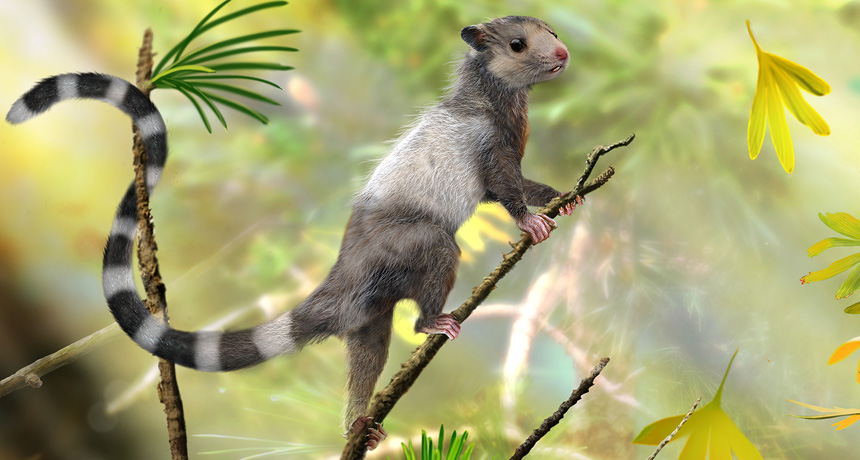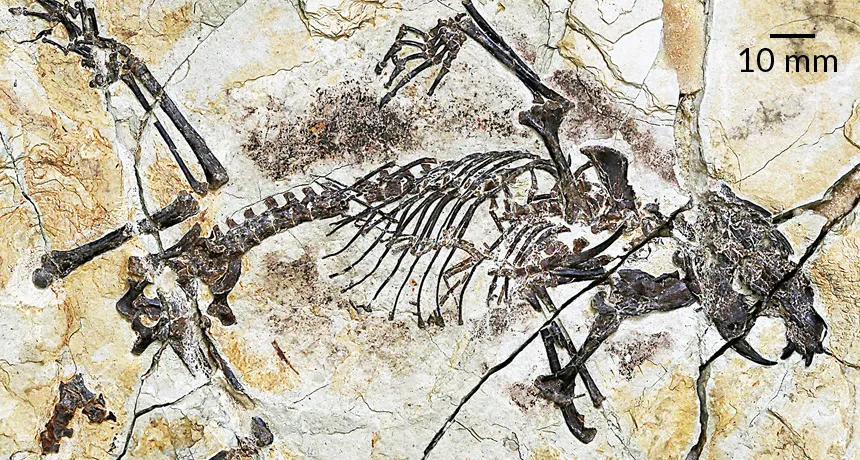Fossils push back origins of modern mammals
Common ancestor evolved over 200 million years ago

TREE HUGGER A newly identified mouse-sized mammal species, Xianshou songae, lived in Jurassic forests and has helped scientists redefine the mammalian family tree.
Zhao Chuang
Modern mammals’ ancestors may have emerged millions of years earlier than scientists suspected — around the time the first dinosaurs roamed the Earth.
The fossilized remains of six little tree-dwelling animals push the lineage of today’s mammals back to the Late Triassic, more than 200 million years ago, researchers report September 10 in Nature.
“That’s really, really old,” says paleontologist Robert Asher of the University of Cambridge, who was not involved with the work. Scientists had thought that the common ancestor of those animals originated sometime in the Jurassic, he says. “This is very exciting stuff.”
The newly reported fossils were found in China and belong to three new species of haramiyid, a group of extinct mammals that researchers first discovered more than a century ago. But most of the animals left behind only teeth, says study coauthor Jin Meng, a vertebrate paleontologist at the American Museum of Natural History in New York City. “We just couldn’t find any better material,” he says. “A generation of paleontologists has been looking everywhere.”

Without more complete specimens, scientists had trouble figuring out where to place this group in the mammalian family tree. The question is one of the most debated topics in early mammalian evolution, says mammalogist Alexander Averianov of the Zoological Institute of the Russian Academy of Sciences in St. Petersburg.
Meng and colleagues’ work may clear up the confusion. The specimens — the most complete haramiyid skeletons ever discovered — reveal rodent-sized animals that may have looked like a cross between a lemur and a squirrel, with spindly fingers, wispy ribs and long slender tails. Each species appears adapted for forest life, and may have climbed or glided among trees.
After examining the fossils’ teeth and bones, Meng’s team found that the animals fit within a branch of the mammalian family tree that includes all mammals living today.
Though the fossils the team describes are only about 160 million years old, previously discovered haramiyids trace back even further— to more than 200 million years ago. So the common ancestors of these animals and modern mammals must be at least that old, or older, Meng says.
The new results might challenge some commonly held beliefs about modern mammals’ ancient ancestors.
People stereotype the earliest mammals as ground-dwelling rodents, Meng says. “They were usually considered rat-sized things that lived in the shadow of the dinosaurs,” he says. But “the new evidence shows that mammals were much more diverse than we thought.”







